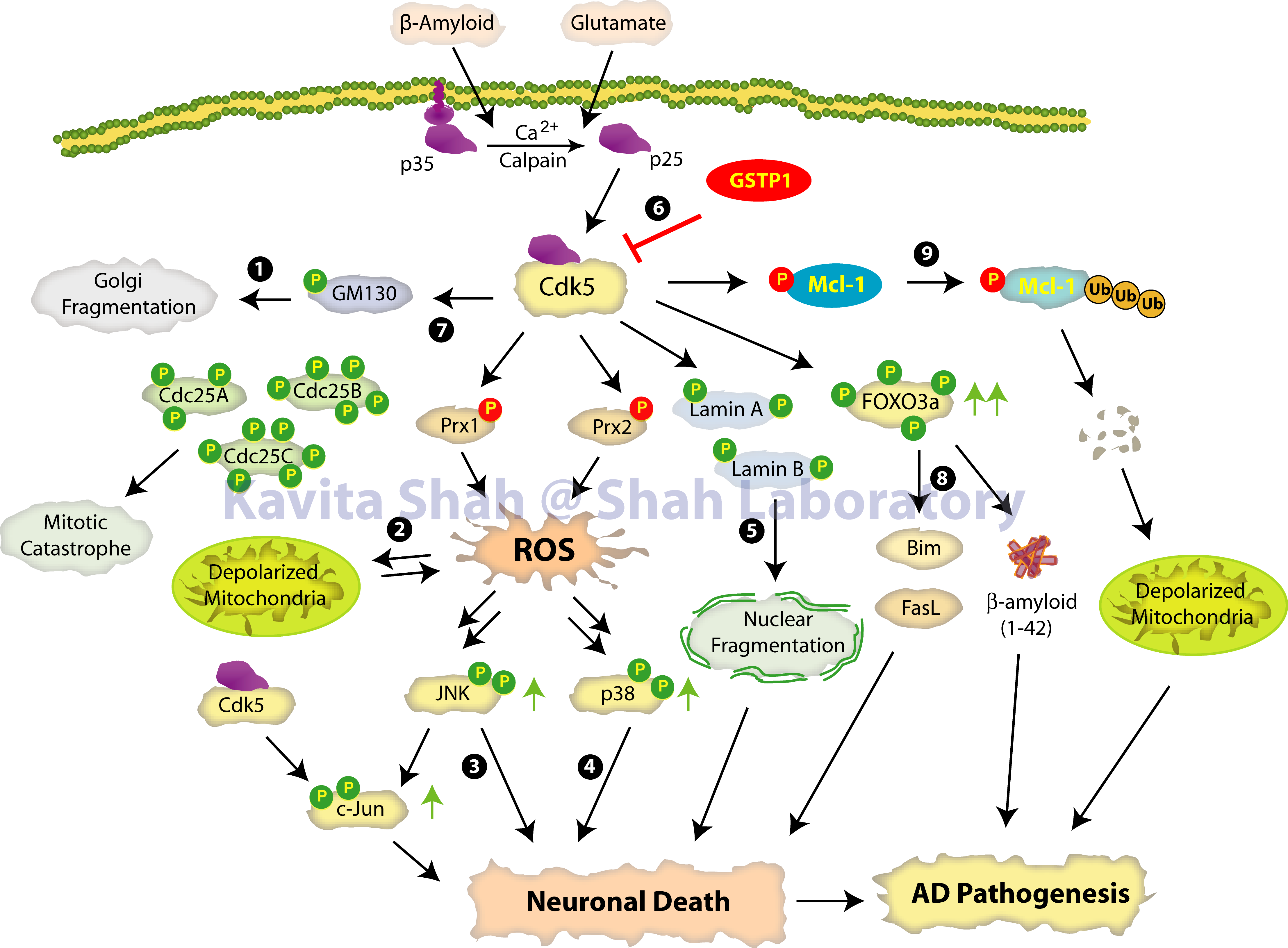Welcome to the Shah Laboratory
Drug Discovery in Cancer and Alzheimer's Disease Using Chemical Biology
Neurotoxic Roles of Cdk5 in AD

A few neurotoxic pathways discovered in our laboratory, which are triggered by deregulated Cdk5 in Alzheimer Disease models.
1. Sun et al., (2008) Novel genetic tools reveal Cdk5's major role in Golgi fragmentation in Alzheimer's disease. Mol Biol Cell 19, 3052-69.
2. Sun et al., (2008) Deregulated Cdk5 promotes oxidative stress and mitochondrial dysfunction. J Neurochem 107(1), 265-78.
3. Sun et al., (2009) Direct and indirect roles of cyclin-dependent kinase 5 as an upstream regulator in the c-Jun NH2-terminal kinase cascade: relevance to neurotoxic insults in Alzheimer's disease. Mol Biol Cell 20(21), 4611-9.
4. Chang et al., (2010) Cdk5 is a major regulator of p38 cascade: relevance to neurotoxicity in Alzheimer's disease. J Neurochem 113(5), 1221-9.
5. Chang et al., (2011) Nuclear envelope dispersion triggered by deregulated Cdk5 precedes neuronal death. Mol Biol Cell 22(9), 1452-62.
6. Sun et al., (2011) Glutathione-S-transferase P1 is a critical regulator of Cdk5 kinase activity. J Neurochem 19(7), 3052-69.
7. Chang et al., (2012) Deregulated Cdk5 triggers aberrant activation of cell cycle kinases and phosphatases inducing neuronal death. J Cell Sci 125, 5124-37.
8. Shi et al., (2016) Cdk5-Foxo3 axis: initially neuroprotective, eventually neurodegenerative in Alzheimer's disease models. J Cell Sci 129(9), 1815-1830.
9. Nikhil & Shah (2017) The Cdk5-Mcl-1 axis promotes mitochondrial dysfunction and neurodegeneration in a model of Alzheimer's disease. J Cell Sci 130(18), 3023-3039. doi: 10.1242/jcs.205666.
10. Nikhil K, Viccaro K, Shah K. (2018) Multifaceted Regulation of ALDH1A1 by Cdk5 in Alzheimer's Disease Pathogenesis. Mol Neurobiol. 2018 Jun 8. doi: 10.1007/s12035-018-1114-9. [Epub ahead of print]